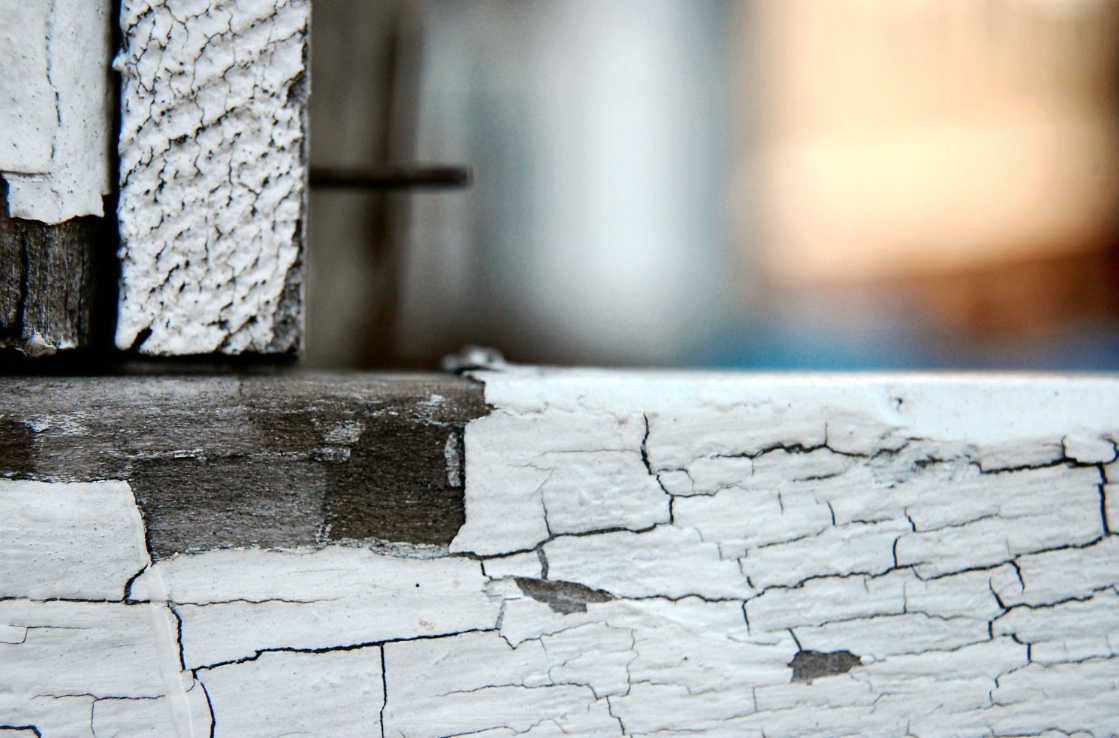As experienced designers, contractors, and owners know, most paint and coating problems are correctable, but some are especially stubborn to address. The following is a partial compendium of typical failure modes and methods for addressing the problem, as provided by paint and coatings manufacturer Benjamin Moore & Co. (www.benjaminmoore.com):
1. Surface imperfections.
There are many types of imperfections that can be visible on painted or sealed surfaces. Alligatoring occurs when the paint film takes on the appearance of alligator hide. (A similar problem is known as wrinkling, which appears as a rough creased or crinkled pattern.) Alligatoring usually occurs when a topcoat is applied before an undercoat is dry, or if an alky enamel or other hard, rigid coating is applied over a latex primer or another more flexible finish layer. Some oil-based coats will lose elasticity as they age, causing this familiar cracking pattern.
2. Blistering.
Blistering (or bubbling) is caused by a localized loss of adhesion and lifting of the paint film from the underlying surface, sometimes when solvent gas expands on sunny façades. Blistering tends to occur in fresh coats of paint.
Both problems require removing as much paint as possible and repainting. However, blistering can immediately reappear if the problem is caused by moisture; to mitigate this problem, the contractor should repair loose caulk and retrofit drainage and drying details, if possible. Installing vents or exhaust fans can also reduce moisture by evaporation before it wets enclosure materials.
For alligatoring, most paint contractors will recommend completely remove the existing oil paint by using a heat gun, scraping, and sanding. After priming the reworked surface with a high-quality latex or oil-based primer, the area can then be recoated with exterior latex or similar paint.
3. Flaking and chalking.
In some cases, a painted or coated surface will exhibit a loose powder or flaking surface. These problems are caused by decomposing paint and are different from efflorescence or mottling, which display white, crusty mineral salt deposits that have leached from mortar, concrete, or masonry surfaces behind the paint. A similar problem known as frosting is often seen on dark paints and coatings; in this case, a white discolored substance appears on the surface, similar to salt staining.
Chalking paint may be washed by rain and cause patterns, or it may wash across other surfaces, an effect called chalk rundown.
4. Miscoloring and staining.
Other sources of miscoloration on exterior and interior surfaces include nailheads and other penetrations that leach a rust-colored stain onto a surface, which often trails down from the location of the hardware. Mildew appears as black, gray, or brown spots or areas on the paint film or caulk bead.
5. Surfactant leaching.
Another source of undesired color change is surfactant leaching, in which concentrated, water-soluble ingredients in latexes seep to the paint surface, often creating a brownish blotchy or shiny appearance. Tannin staining can also be a brownish or tan discoloration on the paint surface, caused by wood tannins that leach through the paint film.
When applied properly onto suitably prepared substrates, architectural coatings will rarely exhibit these kinds of failures. Even better, when integrated into a thoughtful sustainability program, paints and coatings can be a partner in effective building designs that promote improvements to project economics and social considerations as well as protecting the environment.
Related Stories
| Nov 14, 2013
Behind the build: BD+C's 'Pedia-Pod' modular pediatric patient unit at Greenbuild 2013 [slideshow]
Next week at Greenbuild, BD+C will unveil its demonstration pediatric patient unit, called Pedia-Pod. Here's a behind-the-scenes look at the construction of this unique modular structure.
| Nov 8, 2013
Walkable solar pavement debuts at George Washington University
George Washington University worked with supplier Onyx Solar to design and install 100 sf of walkable solar pavement at its Virginia Science and Technology Campus in Ashburn, Va.
| Nov 4, 2013
New DOE code changes require improved energy efficiency in commercial construction
Outsulation by Dryvit incorporates continuous insulation and a seamless air/water-resistive barrier, which meets new code requirements
| Oct 18, 2013
Researchers discover tension-fusing properties of metal
When a group of MIT researchers recently discovered that stress can cause metal alloy to fuse rather than break apart, they assumed it must be a mistake. It wasn't. The surprising finding could lead to self-healing materials that repair early damage before it has a chance to spread.
| Oct 15, 2013
Sustainable design trends in windows, doors and door hardware [AIA course]
Architects and fenestration experts are looking for windows and doors for their projects that emphasize speed to the project site, a fair price, resilient and sustainable performance, and no callbacks.
| Oct 7, 2013
10 award-winning metal building projects
The FDNY Fireboat Firehouse in New York and the Cirrus Logic Building in Austin, Texas, are among nine projects named winners of the 2013 Chairman’s Award by the Metal Construction Association for outstanding design and construction.
| Sep 20, 2013
Perimeter roof edge: The first line of defense in a wind event [AIA course]
Aside from the roof membrane itself, the perimeter roof edge is the most critical component of the roofing system. As such, it warrants more scrutiny when designing a roof system.
| Sep 19, 2013
6 emerging energy-management glazing technologies
Phase-change materials, electrochromic glass, and building-integrated PVs are among the breakthrough glazing technologies that are taking energy performance to a new level.
| Sep 17, 2013
World's first 'invisible' tower planned in South Korea
The 1,476-foot-tall structure will showcase Korean cloaking technology that utilizes an LED façade fitted with optical cameras that will display the landscape directly behind the building, thus making it invisible.
| Sep 15, 2013
How to build a rainscreen using fiber cement panels - AIA/CEU course
This course will review the cause and effects of moisture intrusion and explain how fiber cement panels can be used as a rain screen to reduce moisture build-up, rotting interior walls, and mold growth.
















